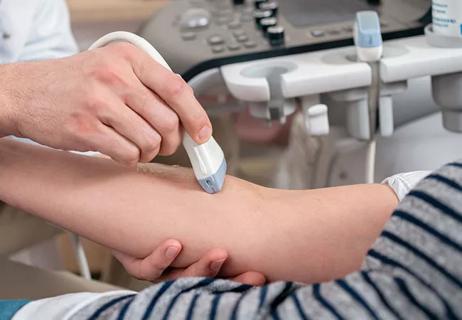How patient signs and symptoms affect caregiver support

At the Heart Failure Society of America’s 22nd Annual Scientific Meeting in September, Nancy M. Albert, PhD, CCNS, CHFN, CCRN, NE-BC, FAHA, FCCM, FHFSA, FAAN, presented a poster with results from a study focused on caregiver burden for people supporting patients with heart failure.
Advertisement
Cleveland Clinic is a non-profit academic medical center. Advertising on our site helps support our mission. We do not endorse non-Cleveland Clinic products or services. Policy
“We know that family and other support people (caregivers) can be burdened by caring for patients with heart failure. We suspected that caregiver burden may be associated with psychological stress,” says Dr. Albert, ACNO of Nursing Research and Innovation at Cleveland Clinic. “In addition, we couldn’t find research evidence about what happens to caregiver burden when patient’s symptoms and functional status improve, worsen or remain stable. We wanted to see if caregiver quality of life and perceptions of burden were associated with the patient’s symptom and functional status stability.”
Dr. Albert and peers from Vanderbilt University Medical Center and TriStar Centennial Medical Center conducted a longitudinal correlational clinical study of adults with chronic heart failure and their designated caregivers. In total, 264 total participants (132 patient-caregiver dyads) completed surveys at the beginning of the study (baseline) and 90 days later.
Patient surveys addressed multiple factors at baseline, including their perception of caregiver support for general activities of daily living, such as cooking, cleaning, paying bills, providing emotional support and driving or arranging transportation, and in heart failure-related activities, such as symptom monitoring, following a fluid or diet restriction, and recognizing changes in condition.
Patients also provided data on heart failure signs and symptoms and New York Heart Association functional status at both time points.
Caregivers completed surveys at baseline and at 90 days on quality of life, perceptions of burden and on their perceptions of support roles in general and heart failure activities of daily living,
Advertisement
When patient and caregiver perceptions of caregiver support (both general and heart failure-related activities) were compared, researchers learned that for many factors, caregivers rated the factor as requiring more of their support than patients did. For example, 86 percent of caregivers indicated they provide emotional support to patients, and only 63 percent of patients believed that their caregivers provide emotional support. Caregivers also believed that they spent more time dealing with patient depression and monitoring and recognizing patient condition changes compared to patients.
“The results provide evidence that patients may not recognize the stressors of heart failure care from their caregiver’s perspective. Lack of recognition may be due to non-physical aspects of care; for example, patients may not recognize the time caregivers spend in dealing with their depression or monitoring heart failure status,” says Dr. Albert.
In this study, investigators also examined if caregiver burden and quality of life at 90 days was based on changes in patient’s symptoms and functional status from baseline to 90 days. In analysis, patient symptoms and functional status at 90 days were categorized into three groups: stable (no change from baseline), decreased (improved) and increased (worse).
“We did not expect to learn that when patients had stable symptoms at 90 days, caregivers reported an increase in the number of heart failure-related activities of daily living that they assisted patients with, compared to patients whose symptoms decreased or increased. Likewise, caregivers of patients with stable symptoms at 90 days (compared to patients whose symptoms decreased or increased) were more likely to have higher caregiver burden at 90 days,” says Dr. Albert. “Most concerning, caregivers of patients with stable symptoms at 90 days, compared to patients whose symptoms decreased at 90 days, had worse quality of life,” says Albert.
Advertisement
It was surprising to the researchers that stability or improvement of patient symptoms at 90 days (compared to patients whose symptoms improved or worsened) was not associated with stability or improvement in caregiver burden and quality of life. “We hypothesized that if patients’ symptom burden decreased, that caregivers would have less need to be involved in heart failure-related activities of daily living, that their caregiving burden would go down and that their quality of life would increase,” says Dr. Albert. “We never imagined that worsening patient symptoms would be associated with less worsening in caregiver’s heart failure activities of daily living or their burden level.”
Dr. Albert believes the results of the study point to the need for more education and support of caregivers. “We need to devote more time and attention to them,” she says. “When patients’ status improves, we need to help caregivers understand that they can relinquish some control. They need to learn how to help patients be more accountable for their own heart failure-related self-care.”
Caregiver burden was also higher when patient’ symptoms were stable (compared to when patients’ symptoms worsened). It is unknown if these results reflected the type of care patients received. “If symptoms were stable, the caregiver may have been the person patients relied on; but, if symptoms worsened, patients may have sought care from healthcare providers,” says Dr. Albert. “More research is needed to better understand our research results and to ultimately improve quality of life and burden on family caregivers.”
Advertisement
Advertisement

New study seeks to uncover the moderating effect of stress

Overestimation of pain can escalate treatment, but underestimation can have other unintended consequences

Study highlights the benefits of clear, concise messaging

How nurses can effect change through professional writing

Fellow critical care nurses welcome additional support and expertise

Pilot study confirms feasibility of conducting additional research on the novel treatment

Study shows ultrasound can be valuable tool for improving patient satisfaction by reducing failed IV insertions

New system uses vital signs to predict need for further intervention